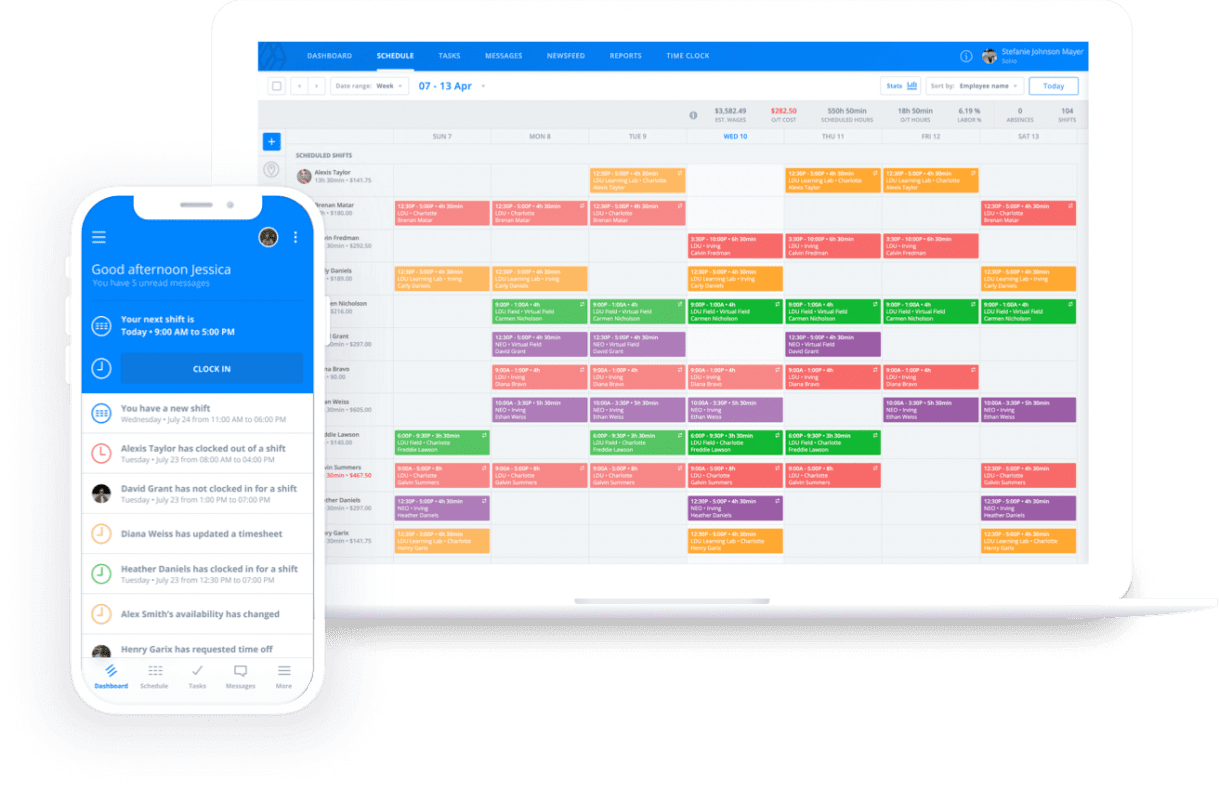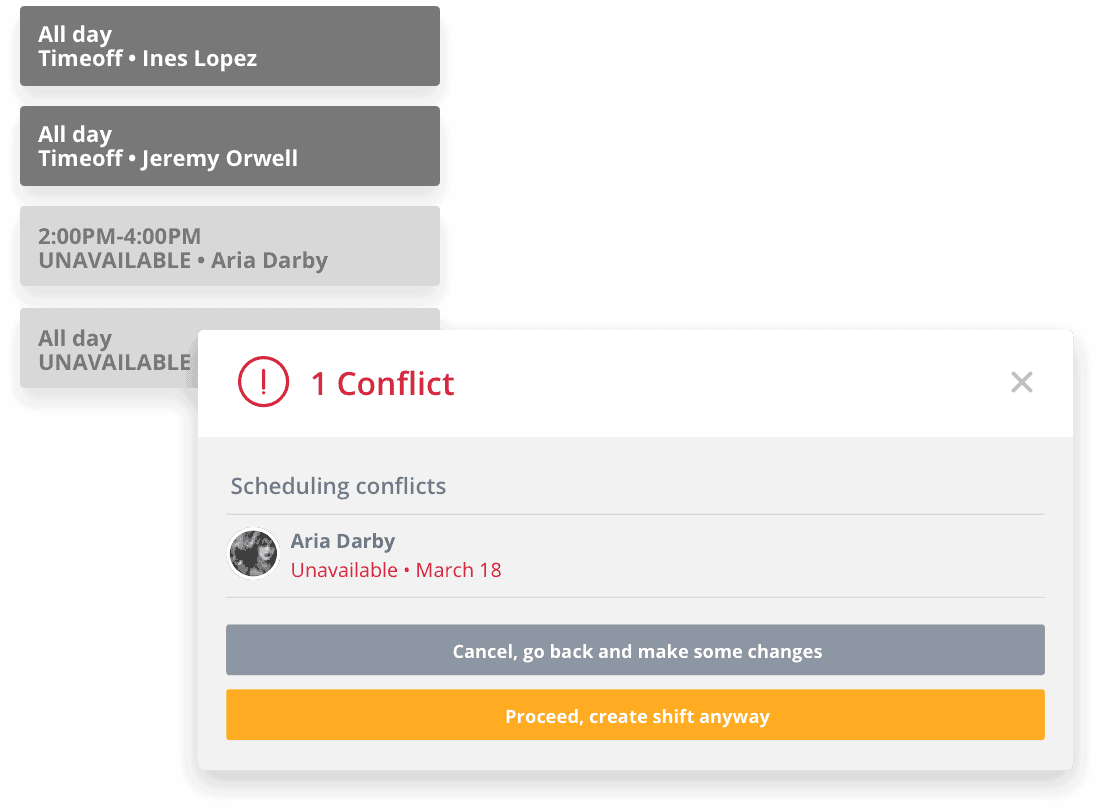1) Sling
Sling is an employee roster app designed specifically with busy managers in mind. Combining calendar simplicity with cloud-based functionality, Sling offers:
- Powerful scheduling
- Built-in time clock
- Extensive communication tools
- Labor cost controls
- Task management
- And much more
Sign up for a free Sling account and enjoy a 15-day trial of all features available. After that, basic features remain free.

























